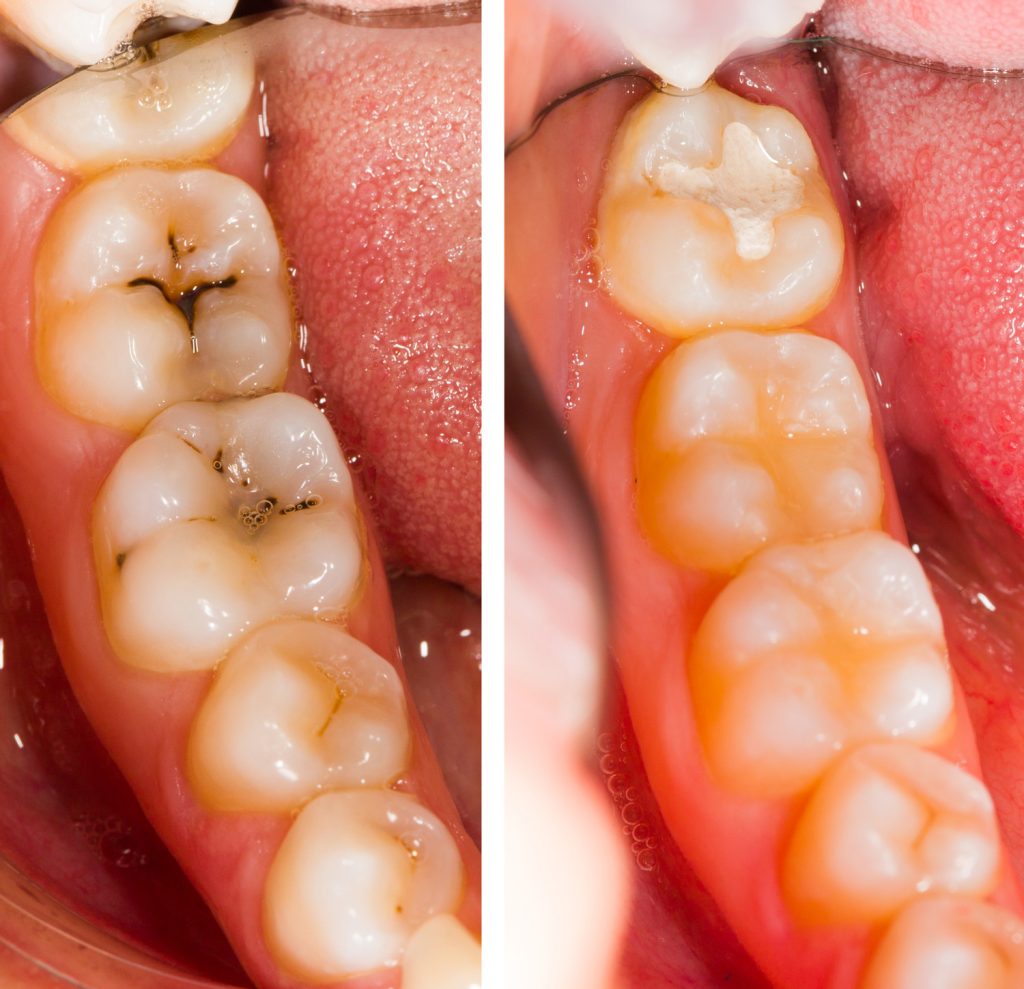What are Dental Fillings?
What are the pros and cons of dental filling substances? What is the definition of indirect fillings? Is it safe to use silver amalgams? Can you have an allergic reaction to amalgam fillings? These are some of the commonly asked questions that will be addressed.

Why is Dental Filling Done?
Dental filling is performed in the following instances:
- To treat tooth decay
- To fill gaps in teeth
- For aesthetics
- To treat tooth fractures
- To treat tooth wear
Types of Dental Fillings
Dental fillings can exist as either temporary or permanent, depending on their intended use.
- Temporary tooth fillings are utilized for diagnostic and treatment purposes. For example, a dentist may place a temporary filling to determine if the nerve is impacted. If the patient continues to experience pain after a certain period, it indicates that the nerve needs to be extracted. In addition, the doctor may use a temporary filling to isolate medication temporarily if needed. Once this duration has passed, the dentist can easily remove the temporary filling and replace it with a permanent one.
- Long-lasting dental fillings are created to repair and restore both the natural shape and functionality of a tooth. These fillings are capable of providing many years of service.
What Types of Filling Materials Are Available?
There are various options for fillings that are accessible. Several examples of these include:
- Tooth-colored fillings, also known as white or plastic fillings, are composed of a blend of powdered glass and plastic resin. They are typically used to fill cavities on the surface of the teeth and closely resemble the natural tooth material they are replacing. These fillings also have the added benefit of releasing small amounts of fluoride, which can potentially lower the chances of future tooth decay.
- Silver fillings, also known as silver amalgam, are a popular choice for dental fillings. They consist of a blend of silver alloy and mercury and are known for their longevity compared to other filling options. The World Health Organization (WHO) and the Dental Federation endorse the use of silver amalgam due to its durability and safety.
- Glass ionomer cement is a tooth-colored, self-hardening mixture of glass and organic acid. It is commonly employed for filling small cavities, securing porcelain or metal crowns, and creating temporary dental restorations.
- Resin ionomer cement is a combination of glass, resin polymer, and organic acid that hardens when it is exposed to blue light. It is also designed to match the natural color of teeth.
- Porcelain can also serve as a temporary filling material.
- Silver colored dental cements, known as nickel or cobalt-chrome alloys, consist of both nickel and chromium and are utilized to secure dental crowns.
- Crowns and partial dentures are made from gold alloys which consist of a combination of gold, copper, and other metals. These alloys are highly durable, but they can be costly and may cause heightened tooth sensitivity.

Procedure Details
To start, the dentist will use a local anesthetic to numb the area near the tooth that needs treatment. Then, they will use a drill, air abrasion instrument, or laser to remove the decayed part. The specific instrument choice is based on the dentist’s familiarity, skill, and investment in the equipment, as well as the location and size of the decay.
Afterwards, the dentist will examine the area to ensure that all decay has been eliminated during the procedure of removing decay. Once the decay is gone, the dentist will cleanse the cavity from bacteria and debris in order to make the space ready for the filling. In the case where the decay is close to the root, a protective liner made of various materials like glass ionomer or composite resin might be applied by the dentist to safeguard the nerve. Typically, after the filling is placed, the dentist will proceed to complete the process by giving it a final touch and making it smooth and shiny.
Tooth-colored fillings require a few more steps. First, the dentist removes the decay and cleans the area. Then, they apply layers of tooth-colored material. After each layer, a special light is used to harden it. Once all the layers are applied, the dentist shapes the composite material, removes any extra material, and polishes the final restoration.
What should I expect after a dental filling?
Following the placement of a filling, an individual may experience heightened sensitivity in their tooth when they:
- eat something sweet
- eat something hot or cold
- bite your teeth together
If your tooth continues to be sensitive even after a couple of days, it is advised that you visit your dentist or dental care provider.
Dental fillings have a limited lifespan and can eventually experience damage, wear, or discoloration.

How long will my filling last?
Dental fillings do not have an indefinite lifespan. They are susceptible to wear and tear, such as chips, cracks, and discoloration. Continual pressure on the teeth can cause the bond between the filling and the tooth to loosen, creating a space where food particles and decay-causing bacteria can accumulate and potentially lead to tooth decay. Proper maintenance is crucial in preserving the longevity of fillings. Regular brushing twice a day and daily interdental cleaning are essential. Fillings can also change in color over time, which may be a concern for some, particularly if it affects the appearance of their front teeth. In such cases, a dentist can replace the filling to match the natural color of the tooth.
Treatment in Türkiye:
The medical staff of surgical teams, doctors, and consultants at REHABTÜRK can provide the best treatment options and free consultations, striving to stay up-to-date on the latest medical technologies and methods.
